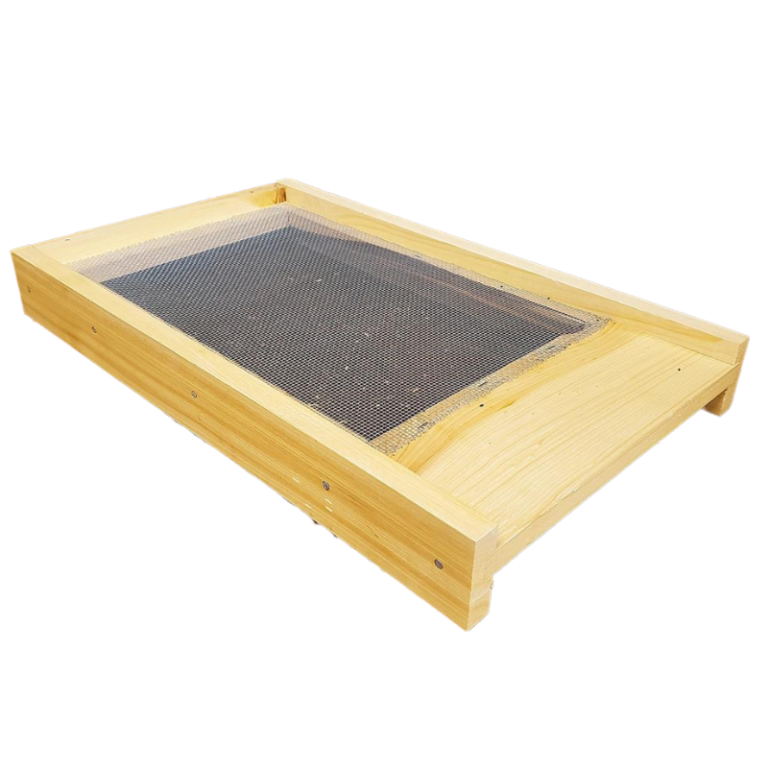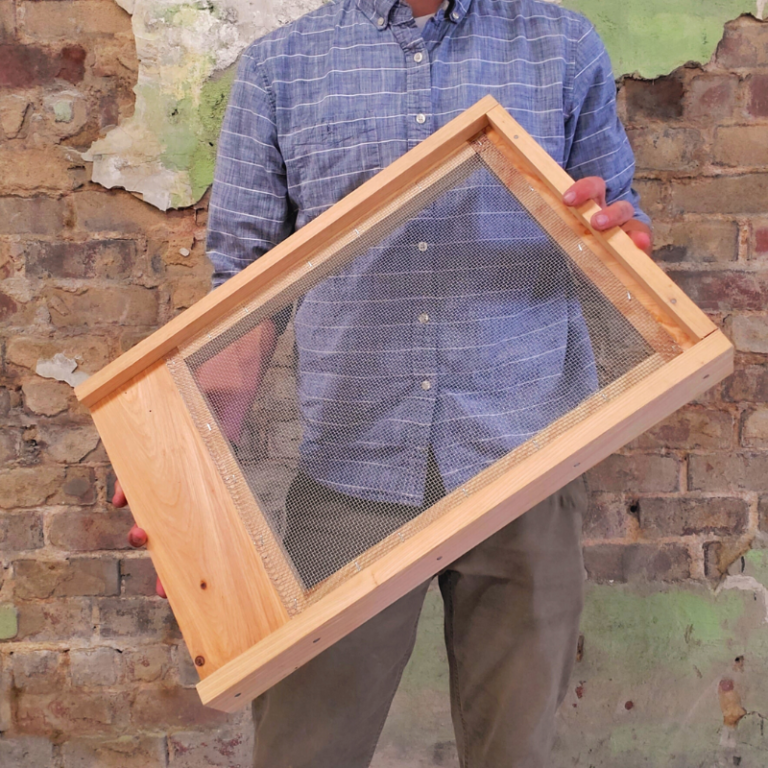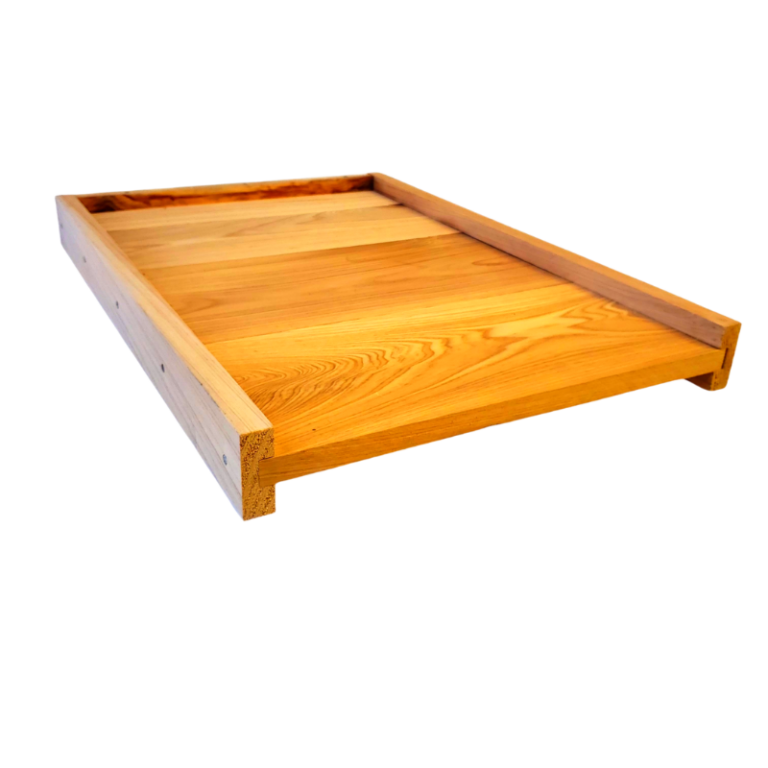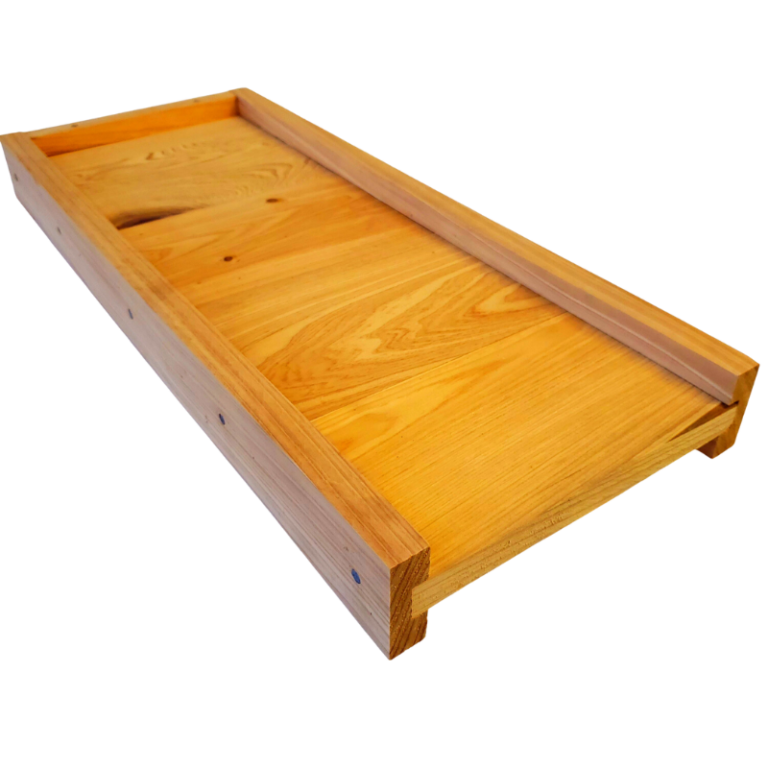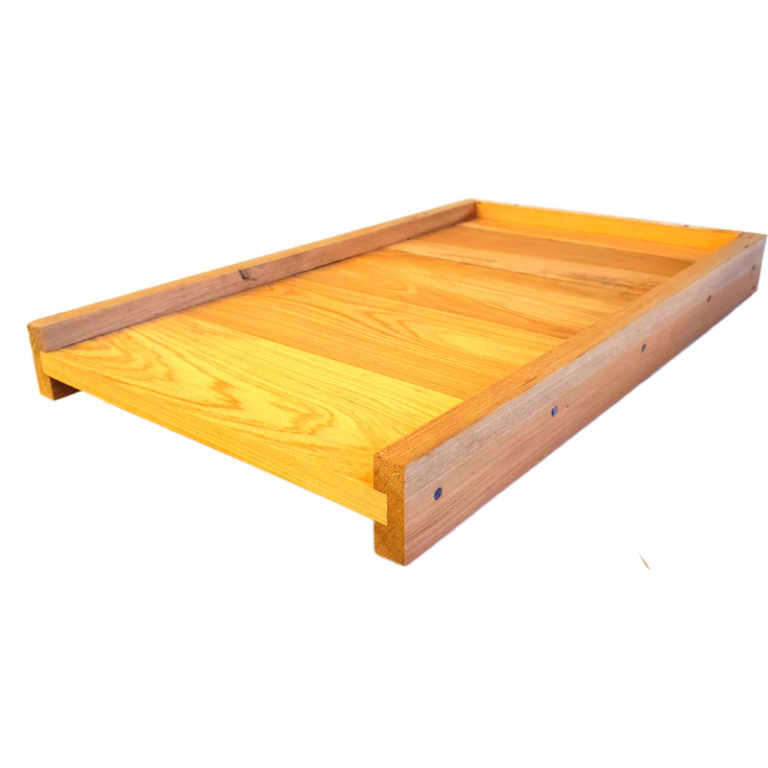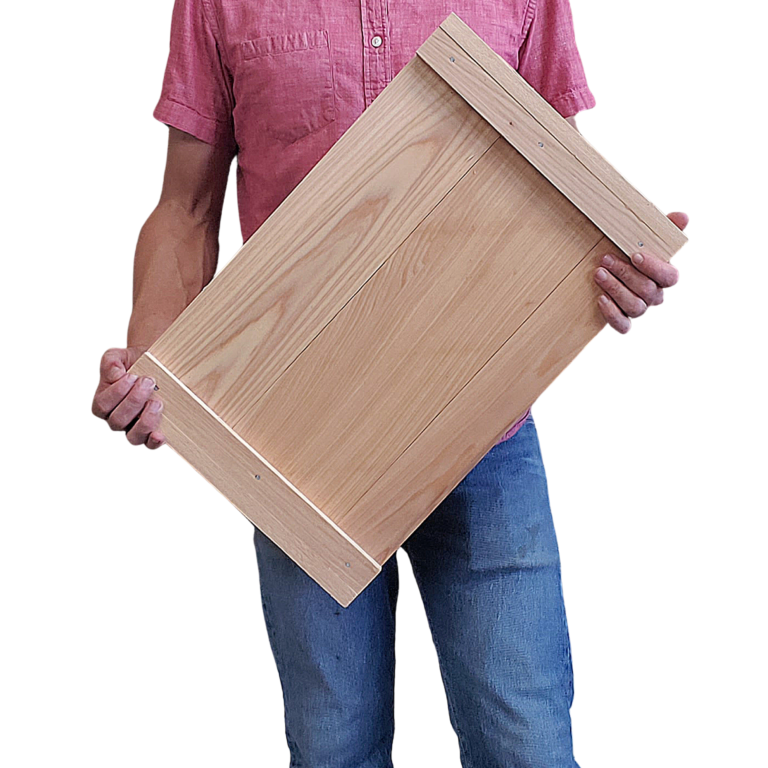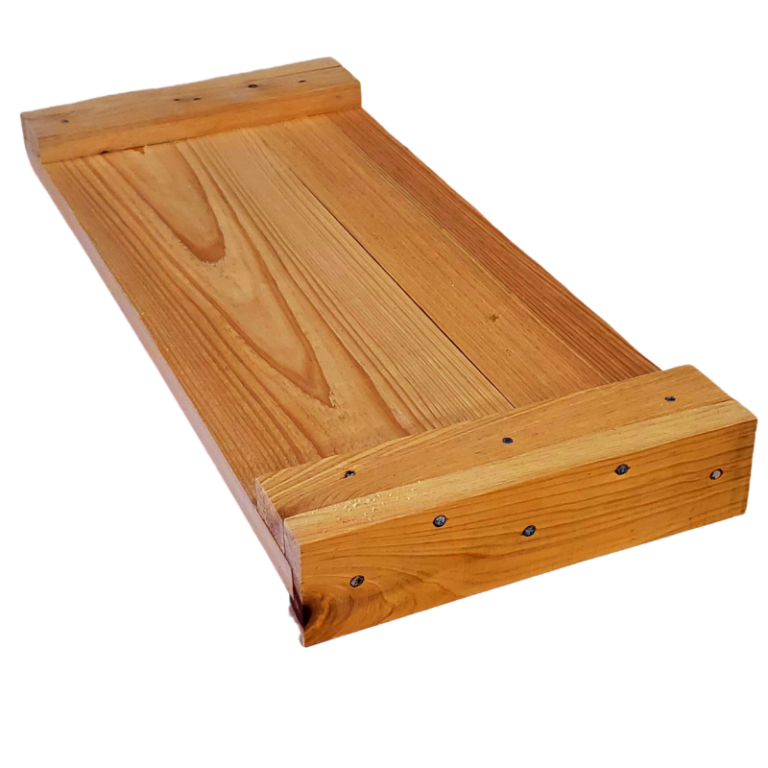

We have been in the beekeeping game longer than we have been in the equipment game, but we spend much of our time talking with beekeepers about the equipment they need (and don’t need) when they get started. Trust us, there is so much more that you don’t need than you do.
But there is some real basic equipment that you do need when getting started. We have a few different articles on that, including the 5 tools every beginner beekeeper needs and also a piece that is a part of our beginner beekeeper guide that talks in depth about getting started.
In this piece, we are going to talk about the bee hives parts from the bottom to the top. But first we need to clarify that we are talking about Langstroth hive parts.
Not necessarily because it is the best, but because it is what most beekeepers use. If you want to read about other types of hives, we have a great post on all the different types of hives.
Table of Contents
1. Hive Stand
2. Bottom Board
3. Brood Box
5. Frames
6. Inner Cover
7. Top Cover
- 7.1 Telescoping Cover
- 7.2 Migratory Cover
We have been in the beekeeping game longer than we have been in the equipment game, but we spend much of our time talking with beekeepers about the equipment they need (and don’t need) when they get started. Trust us, there is so much more that you don’t need than you do.
But there is some real basic equipment that you do need when getting started. We have a few different articles on that, including the 5 tools every beginner beekeeper needs and also a piece that is a part of our beginner beekeeper guide that talks in depth about getting started.
In this piece, we are going to talk about the bee hives parts from the bottom to the top. But first we need to clarify that we are talking about Langstroth hive parts.
Not necessarily because it is the best, but because it is what most beekeepers use. If you want to read about other types of hives, we have a great post on all the different types of hives.
Table of Contents
1. Hive Stand
2. Bottom Board
3. Brood Box
5. Frames
6. Inner Cover
7. Top Cover
- 7.1 Telescoping Cover
- 7.2 Migratory Cover
Hive Stand
Hive Stand
Getting Your Hive Off The Ground The hive stand is crucial in beekeeping. It elevates the hive off the ground, protecting it from ground moisture and pests. A sturdy hive stand also ensures a level foundation, which is vital for proper comb building.
In its most simple version, you can use cinder blocks. But there are many other versions and we have a couple available, including an extremely heavy-duty hive stand one that holds up to 16 hives and a folding hive stand.
Getting Your Hive Off The Ground The hive stand is crucial in beekeeping. It elevates the hive off the ground, protecting it from ground moisture and pests. A sturdy hive stand also ensures a level foundation, which is vital for proper comb building.
In its most simple version, you can use cinder blocks. But there are many other versions and we have a couple available, including an extremely heavy-duty hive stand one that holds up to 16 hives and a folding hive stand.
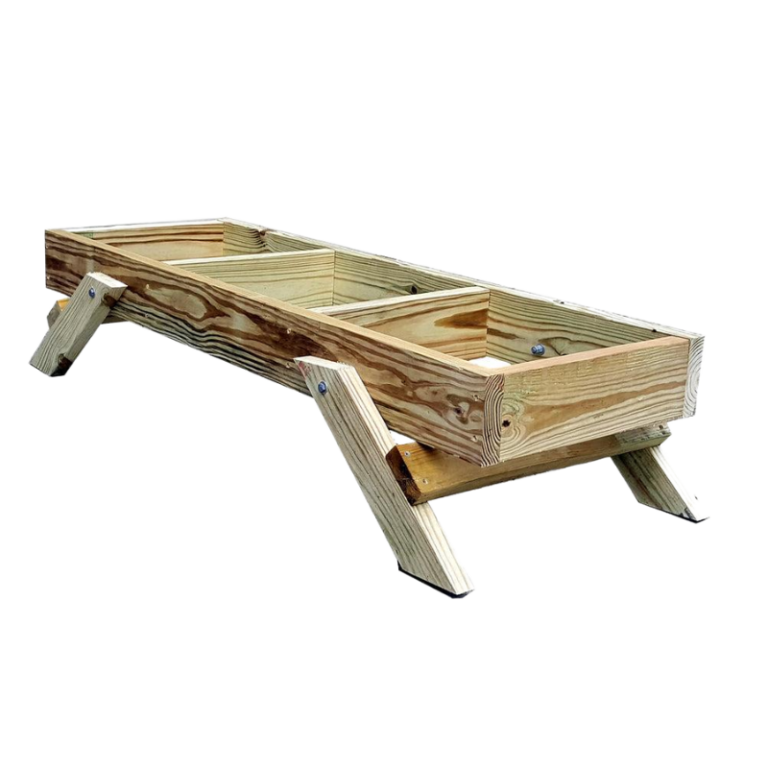
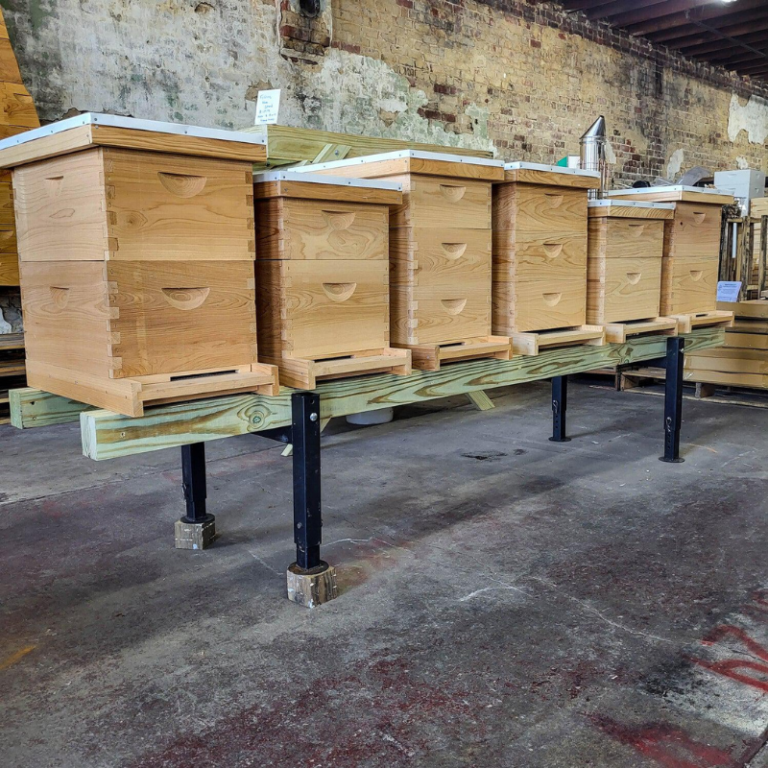
Note that there is another piece of equipment that is also called a hive stand that goes underneath the bottom board. This piece is not meant to be placed on the ground, it is more of a trim piece to make your hive look sharp.
Note that there is another piece of equipment that is also called a hive stand that goes underneath the bottom board. This piece is not meant to be placed on the ground, it is more of a trim piece to make your hive look sharp.
Bottom Board
Bottom Board
The Foundation of Your BeehiveThe bottom board is the base of your hive, supporting its weight and impacting overall hive health and is absolutely essential as a part of the hive.
The Foundation of Your BeehiveThe bottom board is the base of your hive, supporting its weight and impacting overall hive health and is absolutely essential as a part of the hive.
Screened Bottom Board
Screened Bottom Board
Ventilation and Pest Management Screened bottom boards are particularly beneficial for their ventilation when you want it. Not all beekeepers want the ventilation, but we include it as a part of kits. We find there are more positives than negatives for backyard beekeepers. The screened bottom helps manage pests like Varroa mites and reduces moisture.
It also is really helpful when you want to knock small hive beetle populations down in a hurry. The screened bottom board alone won’t do that, but using it with our hive beetle tray makes a huge difference in hive beetle populations.
Ventilation and Pest Management Screened bottom boards are particularly beneficial for their ventilation when you want it. Not all beekeepers want the ventilation, but we include it as a part of kits. We find there are more positives than negatives for backyard beekeepers. The screened bottom helps manage pests like Varroa mites and reduces moisture.
It also is really helpful when you want to knock small hive beetle populations down in a hurry. The screened bottom board alone won’t do that, but using it with our hive beetle tray makes a huge difference in hive beetle populations.
Solid Bottom Board
Solid Bottom Board
Providing Insulation in Colder ClimatesIn colder regions, solid bottom boards offer better insulation, maintaining a warmer hive environment. They are simple yet effective and a favorite of commercial beekeepers because of their simplicity. Solid bottom boards are also nicer when using certain varroa mite treatments like oxalic acid vaporization, Formic Pro and Apiguard.
Providing Insulation in Colder ClimatesIn colder regions, solid bottom boards offer better insulation, maintaining a warmer hive environment. They are simple yet effective and a favorite of commercial beekeepers because of their simplicity. Solid bottom boards are also nicer when using certain varroa mite treatments like oxalic acid vaporization, Formic Pro and Apiguard.
Brood Box
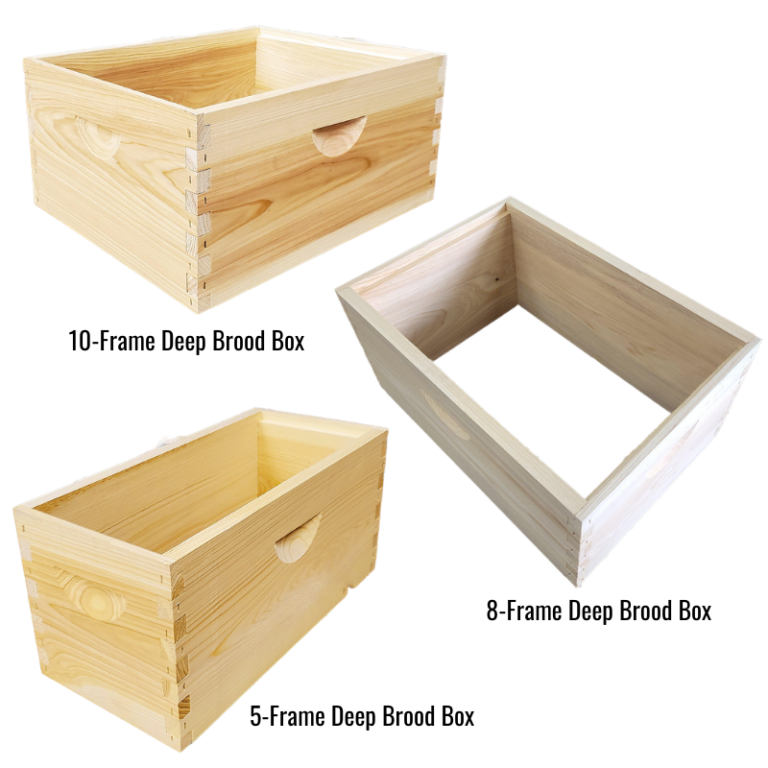
The Heart of the Hive The brood box is where the queen lays her eggs and young bees are raised. The brood box mostly describes the area where this is happening instead of the size of the box.
Bees can lay eggs and raise brood in deep, medium, and shallow boxes. However, because most beekeepers use a combination of deep boxes and medium boxes, a brood box typically refers to a deep box.
At Foxhound Bee Company, we just call our boxes deep boxes, medium boxes, and shallow boxes to avoid confusion. But brood boxes are often called deep hive bodies, a hive body, or brood chamber.
When we first started keeping bees, we actually kept bees in all medium boxes. We used the medium honey super as they are commonly called for everything, including the “brood box”.
Brood Box

The Heart of the Hive The brood box is where the queen lays her eggs and young bees are raised. The brood box mostly describes the area where this is happening instead of the size of the box.
Bees can lay eggs and raise brood in deep, medium, and shallow boxes. However, because most beekeepers use a combination of deep boxes and medium boxes, a brood box typically refers to a deep box.
At Foxhound Bee Company, we just call our boxes deep boxes, medium boxes, and shallow boxes to avoid confusion. But brood boxes are often called deep hive bodies, a hive body, or brood chamber.
When we first started keeping bees, we actually kept bees in all medium boxes. We used the medium honey super as they are commonly called for everything, including the “brood box”.
Frames
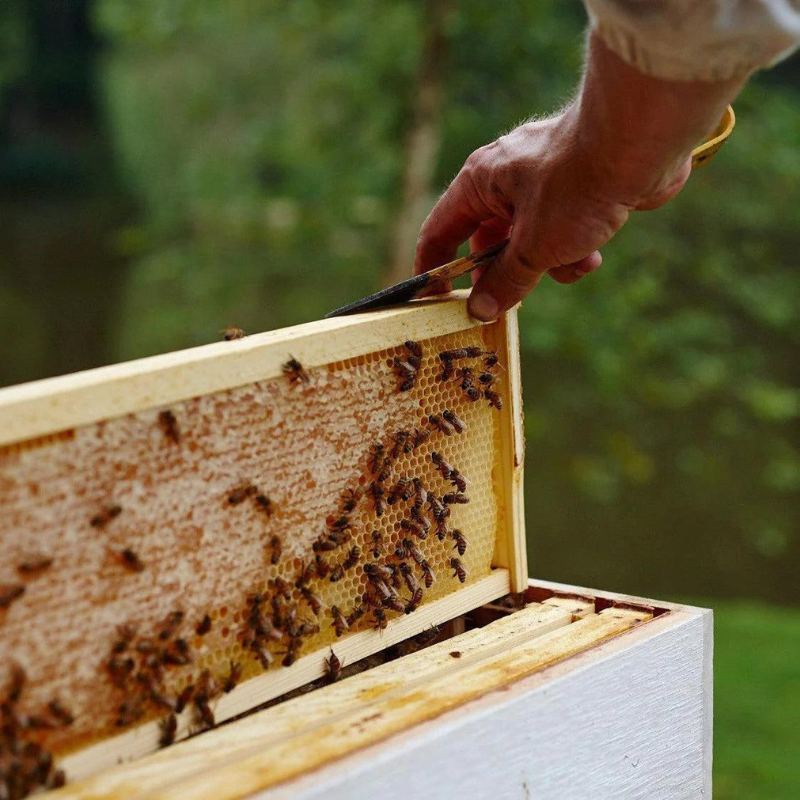
Structuring the Hive Interior Frames allows bees to build, comb, and organize their hive. They are essential for easy hive management and inspection and are what makes our Langstroth hive system so efficient.
There are typical wooden frames with a plastic foundation or wax foundation insert placed into them for the worker bees to build their comb.
The size of the frame is designed to fit the size of the box it is going in. Deep frames would go into a deep box, and medium frames would go into a medium box.
Frames

Structuring the Hive Interior Frames allows bees to build, comb, and organize their hive. They are essential for easy hive management and inspection and are what makes our Langstroth hive system so efficient.
There are typical wooden frames with a plastic foundation or wax foundation insert placed into them for the worker bees to build their comb.
The size of the frame is designed to fit the size of the box it is going in. Deep frames would go into a deep box, and medium frames would go into a medium box.
Inner Cover
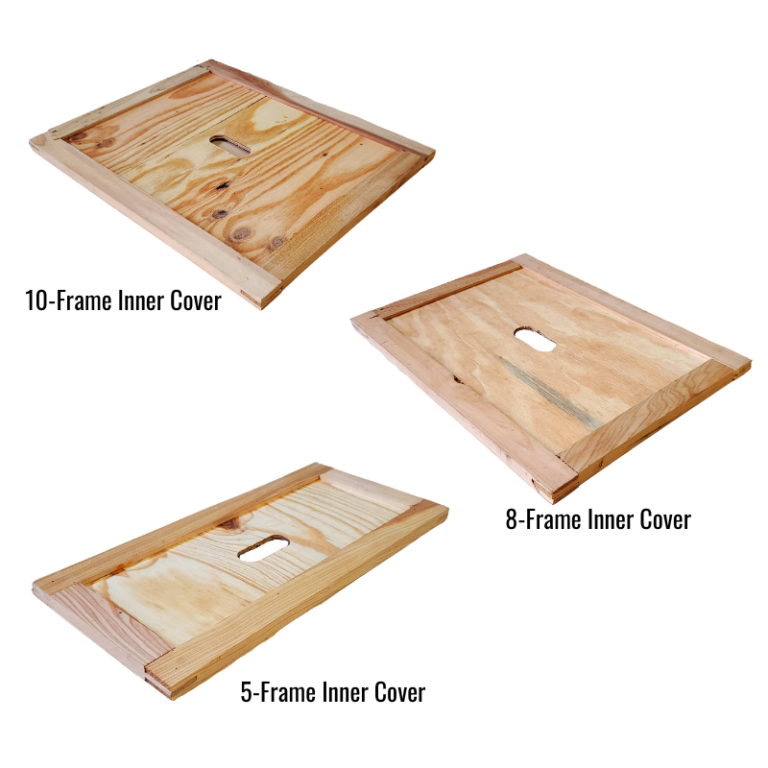
Regulating Hive Temperature and Moisture Sitting beneath the top cover, the inner cover provides insulation and air circulation. It’s a crucial component for temperature and moisture management inside the hive.
Honey bees are really great at controlling the ventilation and humidity in the hive, but using an inner cover can offer flexibility for the beekeeper in several ways.
If using a telescoping cover, you will want an inner cover. However, an inner cover is usually not used when using a migratory cover.
Inner Cover

Regulating Hive Temperature and Moisture Sitting beneath the top cover, the inner cover provides insulation and air circulation. It’s a crucial component for temperature and moisture management inside the hive.
Honey bees are really great at controlling the ventilation and humidity in the hive, but using an inner cover can offer flexibility for the beekeeper in several ways.
If using a telescoping cover, you will want an inner cover. However, an inner cover is usually not used when using a migratory cover.
Top Cover
Top Cover
The very top of the hive protects the colony from the elements. Consider this the roof of the hive.
The very top of the hive protects the colony from the elements. Consider this the roof of the hive.
Telescoping Cover
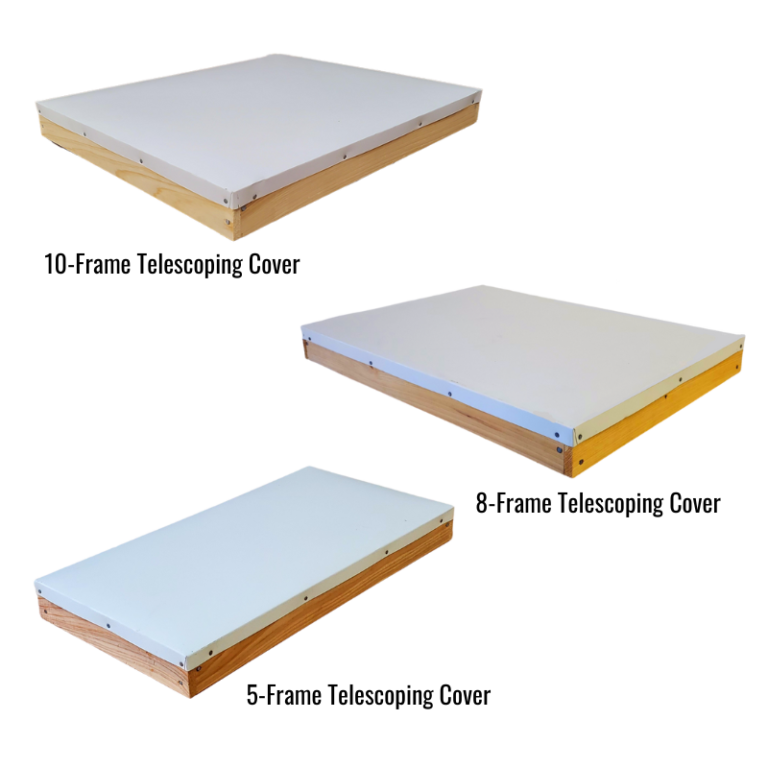
Extra Protection for Harsher Weather Telescoping covers extend over the sides, offering enhanced rain, wind, and snow protection.
These covers also look really sharp and are the preferred hive cover for backyard beekeepers because they offer the best protection from the elements.
They can come in a variety of styles, but the better ones will come with an aluminum cover on the top.
Telescoping Cover

Extra Protection for Harsher Weather Telescoping covers extend over the sides, offering enhanced rain, wind, and snow protection.
These covers also look really sharp and are the preferred hive cover for backyard beekeepers because they offer the best protection from the elements.
They can come in a variety of styles, but the better ones will come with an aluminum cover on the top.
Migratory Cover
Migratory Cover
Simplified for Easy Hive Movement Migratory covers are easier to handle and ideal for beekeepers who move their hives frequently. They offer adequate protection while being easy to remove and put back on.
They are called migratory covers because they are most often used by migratory commercial beekeepers. Simply because they are cheaper to operate and you can fit more on a truck when moving them around.
Simplified for Easy Hive Movement Migratory covers are easier to handle and ideal for beekeepers who move their hives frequently. They offer adequate protection while being easy to remove and put back on.
They are called migratory covers because they are most often used by migratory commercial beekeepers. Simply because they are cheaper to operate and you can fit more on a truck when moving them around.



